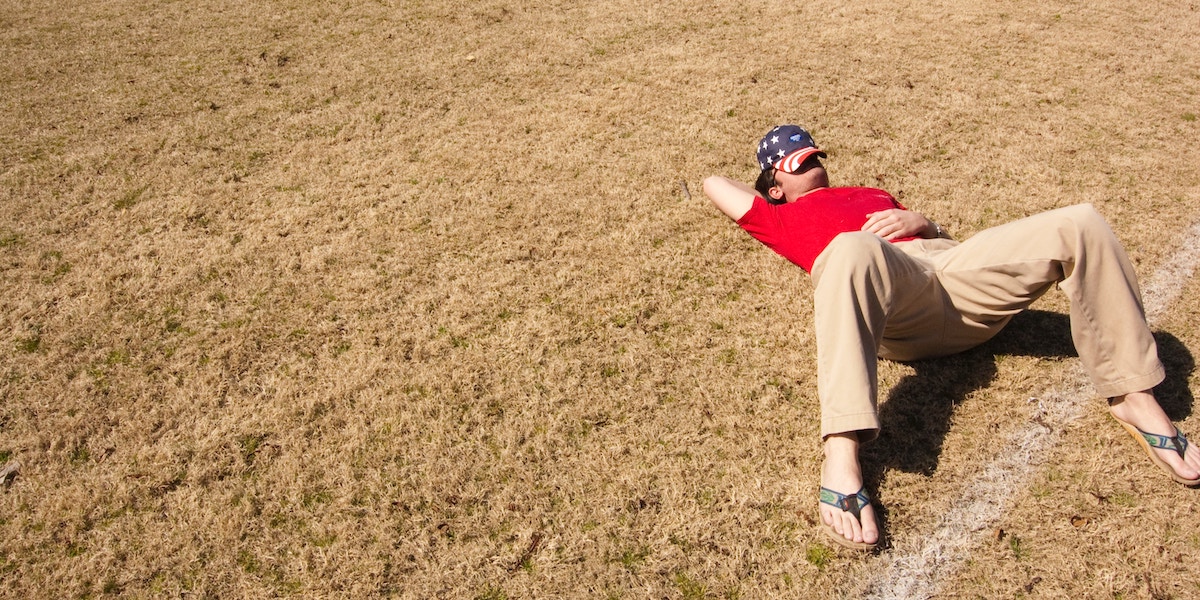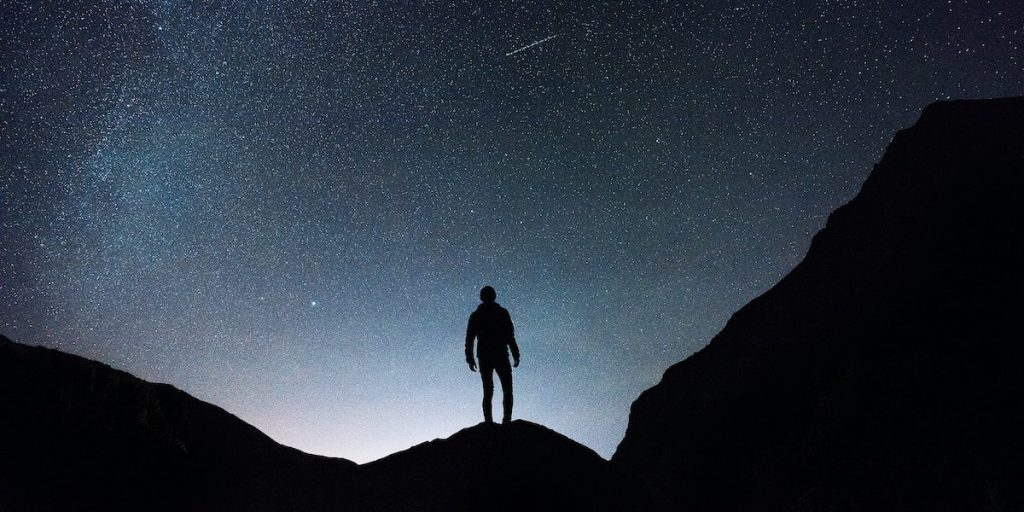READ ON TO DISCOVER:
- How to let your subconscious do your work for you
- Why the world’s great artists and scientists take rest so seriously
- What to do when you’re stuck on a tricky problem
Alex Soojung-Kim Pang is a Silicon Valley futurist, a business consultant, and the author of the acclaimed book Rest: Why You Get More Done When You Work Less. He recently sat down with Srinivas Rao on the Unmistakable Creative podcast to discuss why making time for some R & R is actually the best way to become more creative, productive, and successful.
This conversation has been edited and condensed. Click here to listen to the full version.
Srini: Walk me through the trajectory of your career, and how it led to this exploration of rest.
Alex: I started thinking about rest contributing to creativity during a sabbatical in England. While there, I had a copy of Virginia Woolf’s book, A Room of Her Own, which makes the case that women were not as well-represented in the literary canon because they did not have the opportunities to develop literary lives. And that came down to a matter of leisure—a woman needs a room of her own, and some money, in order to be a writer, and those two simple things had not been available to most women.
I had spent the last month in Cambridge, and it had been wonderful. We’d been able to go off to London on weekends, and go see plays, but I was having this amazingly productive time—I didn’t feel rushed or mentally fractured the way I did in Silicon Valley, in that default state of perpetual partial attention. It made me wonder: Maybe I was getting so much done because life felt slower, because it felt more leisurely. Maybe, as Woolf was suggesting, one way to be more productive was not to work longer hours, but to work fewer.
When I came back home, I started digging into this idea, and I realized that there was a lot of evidence for this. When you get into the daily lives of famous scientists, writers, and composers, you begin to see a pattern: They would work for concentrated periods during the day in a manner that seems highly regimented, and almost anti-creative. But they also spent a lot of time at their leisure—and they took it seriously. [This is true] whether you’re talking about Charles Darwin, or Stephen King, or even Dilbert creator Scott Adams. Recent work in neuroscience and the psychology of creativity provided some explanation for why this pattern worked, why it helped make these people just a bit more creative. And if you’re Watson and Crick, for example, trying to puzzle out the structure of DNA, that little boost could make the difference between giving the Nobel Prize address, and watching someone else get it.
Srini: You broke the book down into sections: walks, naps, sleep, recovery, exercise, and deep play. Could you give us an overview of each one?
Trending: Best Happiness Books of 2025 (So Far)
Alex: Sure. It turns out that some of history’s most creative, productive, and successful people practiced what I call deliberate rest. There’s this idea of deliberate practice—Malcolm Gladwell talks about it in [Outliers]. He draws from a study of conservatory students conducted by Anders Ericsson, who argues that world-class students practice differently than everybody else, that they engage in deliberate practice. Well, it turns out that those students also sleep more than the average student, mainly because they take naps during the day. They also spend less time goofing off or engaging in leisure activities, but they’re better able to explain why they make their choices and how they spend their time. In other words, they engage in deliberate rest as well as deliberate practice.

When you’re really good at this, you can get down to working about four hours a day. However, those are a super-focused, super-intensive four hours. It’s a time that is as bereft of distraction and as full of concentration as you can make it. The conservatory students in Ericsson’s study, for example, were practicing this way for about four hours. You could do more distracted, less intensive work or practice for much longer periods, but this high-performance work is sustainable for about four hours before you hit a wall.
The next question is, how do you go about getting those four hours, and how does it relate to rest? One of the most effective ways to do it is to start the work earlier in the day. This is something that I started doing myself—when I’m deep in writing mode, I will get up at 5:00 a.m. or earlier to write. I have found that in the super early hours, there is a quality to your focus, to your capacity to concentrate, that I think is unique. I think that is one reason that monastics get up so early to pray or meditate—there is something about your mind at that time of day that is impossible to replicate at any other. And then you have space later in the day for rest or for your day job.
And then what almost all of these people do, immediately after this intensive four hours, is go off and take a long break. Most of them will take a long walk. You might also do some other stuff—gardening, swimming, or what have you. But it’s a couple hours long, it’s not mentally intensive, and it’s usually physically challenging.
Walking is particularly useful because it’s something everybody can do. But walking also encourages free association and mind wandering, which sets you up for having interesting new ideas and a-ha moments. Working intensively before you go on that long walk fills your short-term working memory with the problem that you’re working on, and nudges your creative subconscious to continue working on that problem even while you are on the hiking trail.
You’re basically priming a high-quality version of a mental phenomenon that we all have every day. You know those moments when you’re trying to remember the name of that actress who was in that movie, and you can’t remember who it is, but five minutes later you’re doing something else, and their name pops into your head? “Oh, it was Scarlett Johansson!” That is what neuroscientists call the default mode network, working on that problem even while you’ve turned your attention to something else. Really creative people set up their days so that they have long periods where they are apparently doing nothing, where they take walks or even naps, which gives their subconscious time to do that work on their behalf.
“People who have really long careers have managed to find this deep play, this thing that provides both a refreshing break from their work and also a kind of psychological or spiritual sustenance that resembles their work.”
It’s essentially a shortcut to getting new ideas. Your brain is working all the time, even when you think it’s kind of switched off—so they’re making that apparent downtime work for them.
The best of them also recognize that there are certain kinds of problems that elude solution by their conscious minds, but that their creative subconscious is capable of solving. Henri Poincaré, the 19th-century mathematician, talked about this, but he wasn’t the only one—Hermann von Helmholtz said that he hated to admit it, but his subconscious was almost the better mathematician, because it could solve problems that he, himself, could not.
Additionally, naps are important because they are physically and mentally restorative. Even a 15- or 20-minute nap can be good for you, and for some people they become another venue in which to have new ideas. Salvador Dalí, for example, wrote a whole chapter about his method for surfing that space between being awake and asleep, and how he could surface ideas in that space.
Finally, sleep turns out to be super important. It’s when your brain does a lot of the repair work that an overworked, sleep-deprived brain cannot, thereby reducing the odds that you will be felled by Alzheimer’s or dementia later in life. It’s also a critical time during which your brain consolidates your learning, consolidates memories, and does all kinds of processing that sets you up for the next day’s work.
Trending: Why Rest is the Biggest Productivity Hack for Your Brain
There are plenty of stories of people who, in essence, solve problems overnight. Linus Pauling, the only guy to win two unshared Nobel Prizes, would work and work and work on a problem—then he would hit a wall, and he would consciously think about the problem before bed, and then go to sleep. He would do this for a few nights, and eventually the answer would come to him. He attributed to this method some of his more important discoveries, like how to apply the then-new quantum physics to the understanding of atomic bombs. And there were discoveries about the molecular mechanisms of sickle cell anemia that came to him after this process.
John Cleese would come up with punchlines overnight. He said he would work on jokes, and he couldn’t get the punchline, so he would go to sleep thinking about the sketch, and the next morning not only could he finish the sketch, but he couldn’t remember what the problem had been the night before.

Sleep is important for its physiological, restorative properties, but also because it is a place in which our creative minds flourish.
[When it comes to] exercise, knowledge work is actually a lot more physically demanding than we think. For those of us who sit in chairs looking at screens, it’s easy to assume that you expend no calories doing that, but in fact, our brains are really energy- and oxygen-intensive. So the better shape we are in, the better able we are to feed our brains, and handle the stresses of modern careers.
The discovery about the four-hour day was one of the things that really caught me off guard when I was researching the book. The other thing was seeing how many people had really serious hobbies—things that would take them off to the Swiss Alps for a month at a time, or diving in the Caribbean, or going somewhere to paint for a week. For people who are in really competitive fields and really value their time, this seems counterintuitive, right?
But it turns out that there’s a common pattern here as well, whether it is scientists who are avid mountain climbers, or politicians like Winston Churchill, who was a noted amateur painter. These people select these activities because they offer some of the same psychological satisfaction as their work, but in a very different context and at a different time scale. What this means is that for people who really like what they do, but are sometimes frustrated by the downsides, they choose activities that give them both a break from the drudgery—of really challenging experiments, or having to overcome Labor Party opposition to your latest bill—and also a sense of reward and pleasure.
So if you’re a scientist, for example, mountain climbing appeals to you because it’s like science. You’ve got this gigantic challenge, and you break it down into a thousand different little technical problems, and solve each one of them after the other. But unlike science, where you can spend years in a laboratory and your results tell you, “Well, maybe my hypothesis was correct, and maybe it wasn’t,” at the end of the day, either you’ve made it to the peak or you haven’t. It’s unambiguous—it delivers a very clear reward.
People who have really long careers have managed to find this deep play, this thing that provides both a refreshing break from their work and also a kind of psychological or spiritual sustenance that resembles their work. That’s really important for people working in very challenging jobs, especially for people working in fields where they can’t compress everything down to a four-hour day. If you are a neurosurgeon, or you run a hospital, those are going to be long hours—but deep play justifies claiming your weekends back as your own. It often will literally remove you from your normal life and put you out of cell phone range—there aren’t a lot of cell phone towers at the top of Mount Hood. It creates a valuable buffer between you and your everyday work, even as it recharges you and gives you the capacity to go back to work and do a good job.
“In an era when we have supercomputers that fit in our pockets . . . the idea of a four-hour workday should be something that we can take seriously.”
Deep play is one of those things that really surprised me when I discovered it, but it makes a lot of sense, and it’s fun to try and figure out for yourself.
Srini: You mentioned walks, and I know that for a lot of people, their tendency on a walk is to listen to an audiobook or a podcast. Do we derive the same benefits if we do that? And given what we know about the four hours, why do we still have an eight-hour work day?
Trending: How to Break Free From the Ambition Trap
Alex: I think the only bad walk is the walk you don’t take—just the exercise of getting out and letting your eyes focus on something that’s not six feet away from you is a good thing. Although if you go out partly with the purpose of clearing your head, it’s good to not take stuff with you, and to not occupy your mind. Just relax and let your mind wander. You have to trust that things are happening under the hood that you are not conscious of, but which benefit you. The first few times, you may also have to deal with the fact that you’re accustomed to whipping out your phone the instant that you start walking. You’re going to miss that, but you’ll get over it—you really will.
As for why we have an eight-hour day when four hours are really effective… Back in the Industrial Age, labor people fought incredibly hard to get down from a twelve-hour day to an eight-hour day. In the 1920s, people like John Maynard Keynes, the great economist, and Bertrand Russell, the mathematician and philosopher, looked at patterns in work hours, and saw how they had declined in the 19th and 20th centuries, and they said, “You know, by the start of the 21st century, if you follow the slope [of the decline], we’re going to get down to a four-hour work day, or even three hours.”
But we haven’t, mainly because companies have fought hard to keep that from happening. But today there are some very successful companies—including software startups, advertising agencies, web design firms, companies working in very alpha, go-getter-type industries—that have actually moved to four-day work weeks, or to six-hour days, without losing productivity or profitability. And in so doing, they’ve helped their employees become a lot happier and a lot more productive.
So the bad news is that there are a whole bunch of economic and normative forces that have worked to halt that progress, but the good news is that there are signs that it is starting up again, that there is an opportunity to push it along. In an era when we have supercomputers that fit in our pockets, when we have eliminated smallpox and tuberculosis and other diseases that were scourges of humankind for thousands of years, when we can talk about self-driving cars and inexpensive solar power, the idea of a four-hour workday should be something that we can take seriously.
It’s time for us to look at how we would go about creating a world in which that is the default. I think that would be a great thing.
Ready for more big ideas like this? Join the Next Big Idea Club today!





























